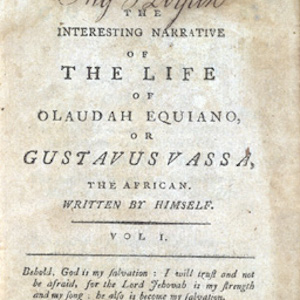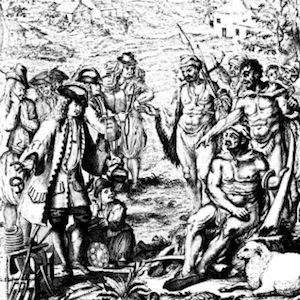Africa

The Interesting Narrative of the Life of Olaudah Equiano: Middle Passage
From the 16th to the 18th centuries, an estimated 20 million Africans crossed the Atlantic to the Americas in the trans-Atlantic slave trade.

A Narrative of the Life and Adventures of Venture A Native of Africa
In this excerpted source, Venture Smith recalls his experiences in the slave trade as a child. This source is especially important, as Smith gives a very vivid account of slave raiding, a common practice that took place during the peak years of the slave trade in the 18th century.

Peter Kolb Travel Narrative 2
Peter Kolb was a German astronomer and mathematician who lived at the Cape from 1705 to 1713. He was initially sponsored by a German baron to make astronomical observations in pursuit of a way to calculate longitude accurately.

Peter Kolb Travel Narrative 1
Peter Kolb was a German astronomer and mathematician who lived at the Cape from 1705 to 1713. He was initially sponsored by a German baron to make astronomical observations in pursuit of a way to calculate longitude accurately.

Journal of Jan van Riebeeck
Krotoa, called Eva by the Dutch, is the first Khoikhoi woman to appear in the European records of the early settlement at the Cape as an individual personality and active participant in cultural and economic exchange.

Children in the Slave Trade Table
The Trans-Atlantic Slave Trade: A Database on CD-ROM, edited by David Eltis, Stephen D. Behrendt, David Richardson, and Herbert S. Klein, contains the best quantitative evidence to date on the number of Africans sold into the slave trade.

Goha Gives His Son a Lesson About People
The anecdote is a lesson to a child who is probably at the adolescent stage of life, and very concerned with how peers and others view him. The experience of the father and son pair shows the futility of trying to act on fickle public opinion.

Tophet of Carthage
These images show a stone grave marker carved with symbols and a terracotta funerary urn containing the charred remains of an infant. The Tophet of Carthage is a cemetery for infants in the ruins of the North African city of Carthage, now located in a suburb of Tunis.

Child's Sock
Archaeologist W. M. Flinders Petrie found this child's sock, dated to the 2nd century C.E., in a cemetery at Oxyrhyncus, a Greek monastic centre on the banks of the Nile in Egypt.

Infant's Tunics
These two infant tunics, found south of Cairo by archaeologists, date to the period after the Arab conquest of Egypt.